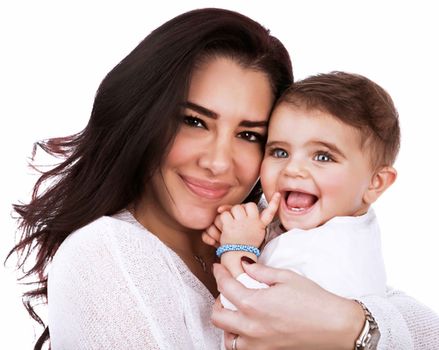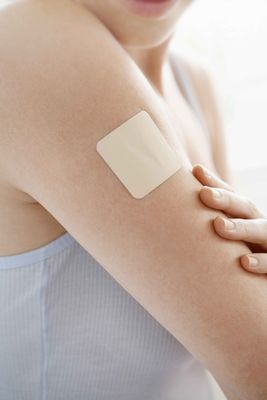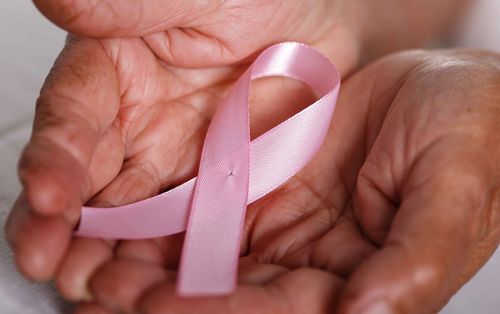Eating a lot of fibre-rich food, especially fruits and vegetables, during adolescence and young adulthood can lower your risk of developing breast cancer, says a Harvard study published in the journal Pediatrics.
The results come from a long-running study on 90,534 women who answered questions about their food intake at ages 27-44 and every four years thereafter for 20 years; 44,263 of these women also completed a questionnaire about their diet during high school.
Breast cancer risk was 12 to 19 per cent lower among women who ate a lot of dietary fibre in early adulthood.
Eating fibre-rich food during adolescence was also linked to a 16 per cent lower risk of overall breast cancer and 24 per cent lower risk of breast cancer before menopause.
Each additional 10g of fibre intake daily during early adulthood reduced the risk of breast cancer by 13 per cent. The greatest benefits came from fruit and vegetable fibre.
Dietary fibre may reduce circulating oestrogen levels in the blood, which is strongly linked to breast cancer. “This work on the role of nutrition in early life and breast cancer incidence suggests one of the very few potentially modifiable risk factors for premenopausal breast cancer,” the study author noted.

Suicide risk of kith and kin
Friends and family of people who commit suicide are more likely to attempt suicide, according to a British study in the journal BMJ Open.
The study included 3,432 university staff and students, aged 18 to 40, bereaved by the sudden death of a family member or friend from natural causes or suicide.
Those who lost a relative or friend to suicide were 65 per cent more likely to attempt suicide than if they lost them to natural causes. The absolute risk of attempted suicide was 1 in 10 for friends and family of suicide victims.
Those bereaved by suicide were also 80 per cent more likely to drop out of school or work. Overall, 8 per cent of those bereaved by suicide dropped out of school or left their job.
People close to the suicide victim tend to perceive more social stigma around the death. Addressing this stigma may help diminish its impact on survivors' lives.
“Our results highlight the profound impact that suicide might have on friends and family members. Suicide in particular is often perceived as a taboo subject. However, avoiding the subject can make a bereaved person feel very isolated and stigmatised, and sometimes even blamed for the death. People bereaved by suicide should not be made to feel in any way responsible, and should be treated with the same compassion as people bereaved by any other cause. If you have been bereaved by suicide, you should know that you are not alone and support is available," the study author noted.

Maternal obesity linked to autism
The risk for autism spectrum disorders begins in-utero. According to a study published in the journal Pediatrics, children born to mothers who are obese and have diabetes have an increased risk for autism.
The study looked at 2,734 mother-child pairs; 102 children were diagnosed with autism spectrum disorder over the course of the study. Kids with autism were more likely to be boys, born premature and with a low birth weight. Their mothers were more likely to be older, obese and to have a diagnosis of diabetes either before or during pregnancy.
Both maternal obesity and diabetes diagnosed before pregnancy were individually associated with an increased risk of diabetes.
The risk was four times greater in children whose mothers were both obese and had diabetes before pregnancy compared to children born to normal-weight mothers without diabetes. The risk was three times greater if the mother was obese and developed diabetes during pregnancy.
Obesity and diabetes may contribute to autism risk because both increase stress and inflammation, negatively impacting the developing brain. Also "obesity is related to lower uptake of folate which could limit the protective effects of folate on autism risk".
"We have long known that obesity and diabetes aren't good for mothers' own health. Now we have further evidence that these conditions also impact the long-term neural development of their children," the lead researcher noted.

The fit survive
Being physically fit not just reduces your risk of suffering a heart attack in the first place, but it can also improve your odds of surviving a heart attack.
"We knew that fitter people generally live longer, but we now have evidence linking fitness to survival after a first heart attack," the study author noted.
The study published in the journal Mayo Clinic Proceedings looked at medical records of 2,061 people, average age 62, who had done a treadmill stress test on an average six years before they suffered a first heart attack.
Their fitness score (metabolic equivalent (MET) score) ranged from 1 to 12, with 12 being the most physically fit.
Those who scored 10 or higher were 40 per cent less likely to die after a first heart attack compared to those who scored less. A third of people with the lowest fitness score died within a year of their first heart attack.
There was an 8 to 10 per cent lower risk of death after a first heart attack with each point increase in the MET score.
The findings suggest that doctors should encourage patients to exercise when counselling them about controlling their cardiovascular risk factors to improve fitness and chances of survival.
Did You Know
Step training can improve balance and gait, and reduce falls in older people by half.
British Journal of Sports Medicine

Parents, be cheerful
Children whose parents suffer from depression are more likely to perform poorly in school, says a study published in JAMA Psychiatry. Parental depression is already known to cause neurodevelopmental, behavioural, emotional, mental and social problems in children.
To analyse its impact on academic performance, researchers looked at the final grades of more than 1.1 million Swedish children at the end of compulsory education, when they were around 16 years old.
Final grades of teens whose parents had been diagnosed with depression were compared with those whose parents did not suffer from depression. In general, kids whose parents were diagnosed with depression had worse grades—about 4 to 4.5 percentage points lower.
“Compared with a student who achieved a 90 per cent, a student whose mother or father had been diagnosed with depression would be more likely to achieve a score in the 85-86 per cent range.”
Maternal depression appeared to affect the academic performance of daughters more than sons.
“Our results suggest that diagnoses of parental depression may have a far-reaching effect on an important aspect of child development, with implications for future life course outcomes,” the study concluded.
Did You Know
Young men who get stressed out easily are more prone to hypertension later on. In a study of 1.5 million Swedish 18-year-old men, those who had the lowest stress-resilience scores were 40 per cent more likely to develop high blood pressure later compared to those who scored the highest.
Heart

Cure spider phobia
Do you suffer from arachnophobia? Researchers at the University of Amsterdam have found a way to cure your fear of spiders in just two minutes.
The therapy involves a single dose of a commonly used beta-blocker, propranolol, used to treat high blood pressure and other heart conditions, and has been found to have amnesic effects, and exposure to the eight-legged creatures.
The therapy is built on the idea of reconsolidation—once activated, memories can be modified in fundamental ways to strengthen or weaken them—identified by Dr Joseph LeDoux 15 years ago.
The study recruited 45 volunteers with fear of spiders. The participants were first exposed to a tarantula for two minutes which activated their fear of spiders. They were then randomised to receive either a single dose of propranolol or placebo.
Those who received propranolol showed a significant reduction in avoidance behaviour and increase in approach behaviour when they saw the spiders, an effect that remained even a year after the study.
“Here we show for the first time that an amnesic drug given in conjunction with memory reactivation transformed avoidance behaviour to approach behaviour in people with a real-life spider fear. The new treatment is more like surgery than therapy. Currently patients with anxiety disorders and PTSD receive multiple sessions of cognitive behavioural treatment or daily drug intake with a gradual (and often temporary) decline of symptoms. The proposed revolutionary intervention involves one single, brief intervention that leads to a sudden, substantial and lasting loss of fear,” the lead researcher noted. The findings appear in Biological Psychiatry.

Conjoined sisters separated
Doctors at Bern University Hospital, Switzerland, have separated eight-day-old conjoined twin sisters fused at the liver and chest. They are the youngest conjoined children to be successfully separated.
The twins, Lydia and Maya, were born eight weeks premature along with their triplet sister, who was born healthy.
They weighed just 2,200 grams together. Though extensively conjoined at the liver, they had all vital organs. But they had problems with blood flow. One child had too much blood and high blood pressure, while her twin did not receive enough blood and had low blood pressure, necessitating immediate surgery. The large blood vessels passing through the liver had to be separated.
Following surgery, the twins have been recovering well. They are breast feeding and putting on weight.
Did You Know
People who use flavoured e-cigarettes, especially ones that taste like cherry, are exposed to a potentially harmful chemical called benzaldehyde that can irritate their airways.
Thorax

Perfect embryo
The UK's Human Fertilization and Embryology Authority has given a team of scientists the go-ahead to edit genes in human embryos. The landmark decision will allow scientists at the Francis Crick Institute in London to alter the DNA of embryos. Right now, the approval is only for research purposes; the genetically-altered embryos cannot be implanted in a woman.
The focus is on the first seven days after fertilisation when a fertilised egg evolves from a single cell to around 250 cells. The researchers will use surplus embryos donated by patients after IVF treatments.
Dr Kathy Niakan, who will lead the study, hopes the experiments will lead to a better understanding of the genes human embryos need to develop successfully into a healthy babies.
However, the approval has raised concerns that it could lead to the creation of designer babies, where genes may be altered not just to delete disorders but to modify everything from a child's eye and hair colour and appearance to intelligence.
Speed up healing
The Food and Drug Administration has approved the Integra Omnigraft Dermal Regeneration Matrix (Omnigraft) to treat diabetic foot ulcers that last longer than six weeks and do not involve any exposure of the joint capsule, tendon or bone. About 15-25 per cent of diabetics develop foot ulcers during their lifetime and more serious cases require amputations.
Omnigraft was first approved in 1996 to treat severe burn injuries when the patient’s own skin could not be used for grafts. Made of silicone, cow collagen and shark cartilage, the device is placed over the ulcer and helps the wound to heal and for new skin and tissue to regenerate.
In a clinical study, 51 per cent of patients treated with Omnigraft combined with standard care had healed ulcers after 16 weeks compared to 32 per cent of patients treated with standard care alone, which included cleaning and covering the wound with a surgical bandage and keeping weight off the foot with the ulcer. There was a 59 per cent improvement in the incidence of complete wound closure with Omnigraft compared with standard care alone.
Adverse reactions included infections, increased pain, swelling, nausea and new or worsening ulcers.
The device is not recommended for people with allergies to its components or who have an infected wound. Omnigraft is manufactured by Integra LifeSciences Corporation.

Stop-smoking therapies
Smoking cessation therapies including pills, nicotine patches and lozenges have similar success rates in helping people quit successfully, according to a US study published in JAMA.
The study randomly assigned 1,086 smokers to one of three 12-week smoking cessation therapies: nicotine patch only, cessation pill varenicline only, or nicotine patch + nicotine lozenge. All the participants were also offered six counselling sessions.
At 26 and 52 weeks, all three groups had similar quit rates. About one in five smokers quit smoking. At six months, the quit rate was 23 per cent for the patch, 24 per cent for varenicline, and 27 per cent for the combination of patch and lozenges. At a year, the quit rate was 21 per cent, 19 per cent and 20 per cent, respectively. All medications were well tolerated, but there were more side effects such as insomnia, nausea, constipation, sleepiness and indigestion with varenicline.
“The results suggest that the widely available, simple to use, nicotine patch can produce long-term smoking cessation rates that are similar to those produced by more intense treatments,” said the lead study author.
Did You Know
Eating flavonoid-rich fruits and vegetables such as blueberries, apples, pears, prunes, strawberries, grapes, peppers and celery can help with weight management and is associated with less weight gain.
BMJ

Don't delay treatment
Not delaying treatment after getting a diagnosis can improve survival odds of breast cancer patients, suggest findings of two studies published in JAMA Oncology.
To analyse how timing of surgery after a diagnosis affects survival, researchers of the first study assessed patient records from two large databases that included more than 2 lakh patients. The patients were grouped based on 30-day intervals from diagnosis to surgery.
The majority of patients had surgery within 30 days of diagnosis. There was a 9 to 10 per cent increase in mortality from all causes for each 30-day interval increase in the time between diagnosis and surgery, especially for women with earlier stages of breast cancer.
“The findings from the analysis answer a question that nearly every patient asks: ‘Will my prognosis be affected by the time it takes me to get to surgery? A longer time to surgery means lower survival,” the lead researcher noted.
The second study looked at the timing after surgery to start chemotherapy in about 25,000 patients with invasive breast cancer. There was no difference in survival when chemotherapy was started up to 90 days after surgery.
But women who waited more than three months had a 34 per cent increased risk of death from any cause and a 27 per cent increased risk of dying from breast cancer compared to women whose chemotherapy started sooner.
Another study from the Netherlands presented at the 2015 San Antonio Breast Cancer Symposium found that women with early-stage breast cancer who received lumpectomy (breast-conserving surgery) plus radiation therapy survived longer compared with those who received mastectomy (removing the entire breast) without radiation therapy.
Seventy-seven per cent of women in the study who underwent lumpectomy plus radiation were still alive 10 years later compared to only 60 per cent of women who opted for a mastectomy without radiation. After accounting for factors such as age, grade of the cancer and whether the patient received hormonal therapy, women in the lumpectomy group were 21 per cent more likely to be alive 10 years after treatment than those who received mastectomy.
"I think these results offer women important information to discuss with their doctors when making a treatment decision for early stage breast cancer," said the lead researcher.

Benefits from mom
Babies born vaginally are exposed to a host of good bacteria as they pass through the birth canal. These microbes colonise the baby’s skin, eyes, mouth and gut and help build their immune system.
But Caesarean babies miss out on these beneficial microbes, putting them at a greater risk of asthma, allergies, obesity, type 1 diabetes and autoimmune diseases later in life.
A small "proof of principle" study shows that it is possible to transfer some of those germs by dabbing infants delivered by C-section with their mothers' vaginal secretions.
The study involved 18 infants and their mothers—7 born vaginally and 11 by elective C-section, four of whom were exposed to vaginal fluids at birth.
The researchers placed sterile gauze in the mother's vagina for an hour before surgery and swabbed the baby's mouth, face and rest of the body with the fluid-soaked gauze within two minutes of birth.
The researchers collected and analysed more than 1,500 samples of bacteria from different parts of the body during the first month of life. C-section babies exposed to vaginal fluids had bacterial communities that were more similar to vaginally-delivered babies than C-section babies who were not exposed to their mother's vaginal fluids.
The researchers hope to follow the children to see whether exposing them to their mothers’ vaginal fluids has any short-term or long-term health benefits. “Our study is the first to demonstrate that partial microbiome restoration just after birth is possible in babies born by C-section,” said the lead researcher.
The findings are reported in the journal Nature Medicine.
Contributor: SHYLA JOVITHA ABRAHAM






